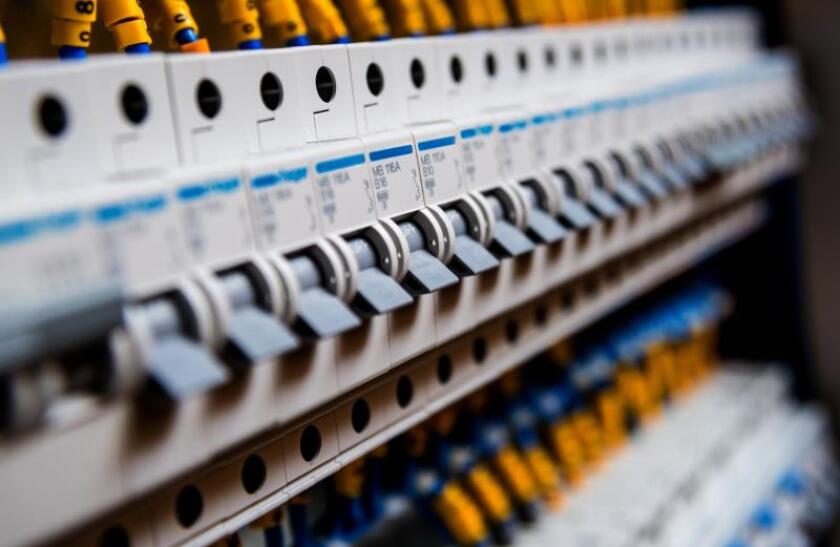For more articles like this, visit IFLR’s coronavirus resource hub.
As the global economy falters and a financial crisis beckons due to the unprecedented Covid-19 pandemic, our latest primer looks at the circuit breakers used by US securities markets to prevent freefall. These little used mechanisms had not been seen since 1997, but have become an almost daily occurrence during this crisis, activating on March 9,12 and 16.
What are market circuit breakers?
In US securities markets there are three ways to dampen intraday volatility – one of which is market wide circuit breakers (MWCB). Under these standards, when the S&P500 index declines by a specified percentage it automatically triggers a 15-minute pause in all equities and options markets.
Circuit breakers were introduced in 1987 following a flash crash in the equities market that caused a 23% drop. Sometimes the market doesn’t move significantly for fundamental reasons, but simply because a large size transaction takes place that triggers momentum-based trading by others.
See also: The Italian treatment: the decree to fight coronavirus
The triggers for MWCB are based on the previous day’s close of the SPX index. The three levels are 7%, 13% and 20%. The first two levels trigger 15-minute pauses in the market if breached prior to 3:25pm EST. If triggered after that time, the market will stay open until the normal time of 4pm EST. The third-level breach of 20% down from previous SPX close will close the market for the rest of the day at any point.
"Market-wide circuit breakers enforce a trading pause so that investors have time to absorb information, better understand what’s happening in the market, and make decisions accordingly," writes Stacey Cunningham, president of the New York Stock Exchange.
If the index declines by more than 20%, trading is halted for the day. "The idea is that it gives the market the opportunity to absorb and digest events so that trading can occur in an orderly fashion," says Colin Lloyd, partner at Cleary Gottlieb.
What are the other measures to dampen volatility?
The second method of preventing market volatility is known as the Limit Up-Limit Down (LULD) mechanism, which is used to prevent trades in individual securities from occurring outside of specified price bands. If an individual stock exceeds a particular limit, which is established by the exchanges for each individual stock, the stock will enter into what's known as a limit stage, meaning trading cannot take place. If trading can't take place within that band within 15 seconds, then the primary listing exchange will declare a five-minute trading halt for that security.
See also: Covid-19: M&A market stalls amid uncertainty
The average price is taken over the last five minutes of trading, then a band is placed around it. It is usually plus or minus five percent, although this number varies. A message goes out to everybody involved. "It’s basically designed to keep stocks from moving too far too fast. When something does happen to a stock it goes into the LULD and there is a hole in the auction," says James Angel, professor at Georgetown Law. "It keeps things from getting too insane. One of the problems we have is that in our completely automated markets where computers mechanically match, buy and sell orders – that's all they do – there is nobody monitoring things to ask if a price make sense."
"So if somebody puts in an order to sell a security at a penny, well – guess what – it might be executed and sold at a penny," he adds.
The third measure is a short sale restriction. If a stock has declined by 10% in one day then there is a short sell restriction preventing market participants from executing or displaying a short sale at a lower price.
Why are circuit breakers so important during a crisis?
Circuit breakers provide an opportunity to pause trading for a period of time so that traders can take stock and decide whether it makes sense to continue selling or not.
"MWCBs are critical to help maintain orderly markets in times of stress," says Michael Beth, vice president of equity and derivatives trading at Wallach Beth. "It limits the amount the overall market can go down before a pause, giving relief to participants, and in extreme cases will cause the market to close for the day."
"Circuit breakers are a good safety check in the market," he continues. "It’s strictly a way to make sure flash crashes and other adverse scenarios do not occur as readily. Markets can still sell off after a level is breached, however, it gives participants the ability to reevaluate and press pause on a potential panic."
In times of crisis – such as that caused by Covid-19 – a lot can happen in a short space of time. Markets don’t necessarily act how they should. Buyers and sellers don't always match. Sometimes there’s a gap, and sometimes that gap is large.
A system that immediately matches every buy order with whatever sell interest is in the book, or vice versa, will end up with an incredibly volatile stock price. This doesn't reflect the consensus of supply and demand.
"For example, during the flash crash in 2010 the market was overwhelmed by volume, and we saw crazy prices," says Angel. "In those circumstances it makes sense to have, as they say, the pause that refreshes."
What issues are there with existing circuit breaker systems?
Given the current global situation, it’s clear that the market is spooked. Market-wide circuit breakers are being tripped with much higher frequency than in normal times. "Most of those trips were totally unnecessary. The way we open our markets is actually quite elegant, and not fully appreciated by a lot of people," says Angel.
When morning comes, most traders already have a good idea as to how it will look at the opening bell. There’s overnight futures trading, and at 4am some exchanges turn on their computers and adventurous investors enter the market for pre-opening trading. By 9:30am, there are few surprise bids.
But if the market opened down and was then immediately halted, it makes no sense at all," says Angel. "The market had already been halted. It doesn't make sense to open it up with an auction and then halt and then wait 15 minutes for another auction. It really makes no sense at all."
One solution would be to start the clock in the morning based on the opening auction, rather than the night before.
Circuit breakers remain an important means to dampen volatility. "When a circuit breaker is triggered, especially in the middle of the day like a major event or announcement, it is very useful," says Lloyd.
Is there an alternative?
Various market participants have called for a temporary hold on all market trading, as seen in the days that followed the September 11 attacks. This would be a decision between regulators and exchanges. Both have insisted there is no such plan in place.
Ensuring that the markets remain open will help to ensure stability. "It’s important that markets continue to function. Closing them can have fairly significant downstream effects on investors, who may need access to cash for daily life or business expenses," adds Lloyd. "Not being able to sell securities could be a problem."
There are others – institutional investors, for instance – who typically have large numbers of outstanding derivative short positions. It’s important for them to be able to trade actively to manage those positions. They would be exposed to a huge amount of risk if markets halted trading altogether for an unspecified period of time.

